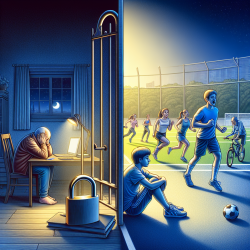Understanding the Impact of Movement on Adolescent Mental Health
As a Special Education Director, ensuring the well-being of our students is paramount. Recent research from Bangladesh highlights a significant link between adherence to 24-hour movement guidelines and the mental health of adolescents. This study, titled Adherence to 24-hour movement guidelines and their association with depressive symptoms in adolescents: Evidence from Bangladesh, provides valuable insights that can help practitioners enhance their skills and improve student outcomes.
The Research Findings
The study examined 312 Bangladeshi adolescents aged 13-17 and assessed their adherence to movement guidelines, which include physical activity (PA), screen time (ST), and sleep. The findings revealed that only 2.2% of adolescents met all three recommendations, with 49% not meeting any. However, meeting the PA and sleep guidelines significantly reduced the odds of depressive symptoms.
Key Takeaways for Practitioners
- Promote Physical Activity: Encourage students to engage in at least 60 minutes of moderate-to-vigorous physical activity daily. This can be integrated into school programs or after-school activities.
- Encourage Adequate Sleep: Ensure students understand the importance of 8-10 hours of sleep per night. Schools can support this by educating parents and students about healthy sleep habits.
- Limit Screen Time: Advocate for limiting recreational screen time to no more than 2 hours per day. This can be achieved by promoting other engaging activities that do not involve screens.
Why This Matters
The research underscores the need for public health campaigns to promote adherence to movement guidelines. By focusing on these areas, we can significantly impact the mental health of adolescents, reducing depressive symptoms and improving overall well-being.
Next Steps for Practitioners
Practitioners are encouraged to integrate these findings into their work with students. This might involve collaborating with parents, teachers, and community organizations to create supportive environments that foster healthy movement behaviors. Additionally, further research is recommended to explore the inter-relationships of these behaviors and their impact on adolescent health and well-being.
To read the original research paper, please follow this link: Adherence to 24-hour movement guidelines and their association with depressive symptoms in adolescents: Evidence from Bangladesh.










